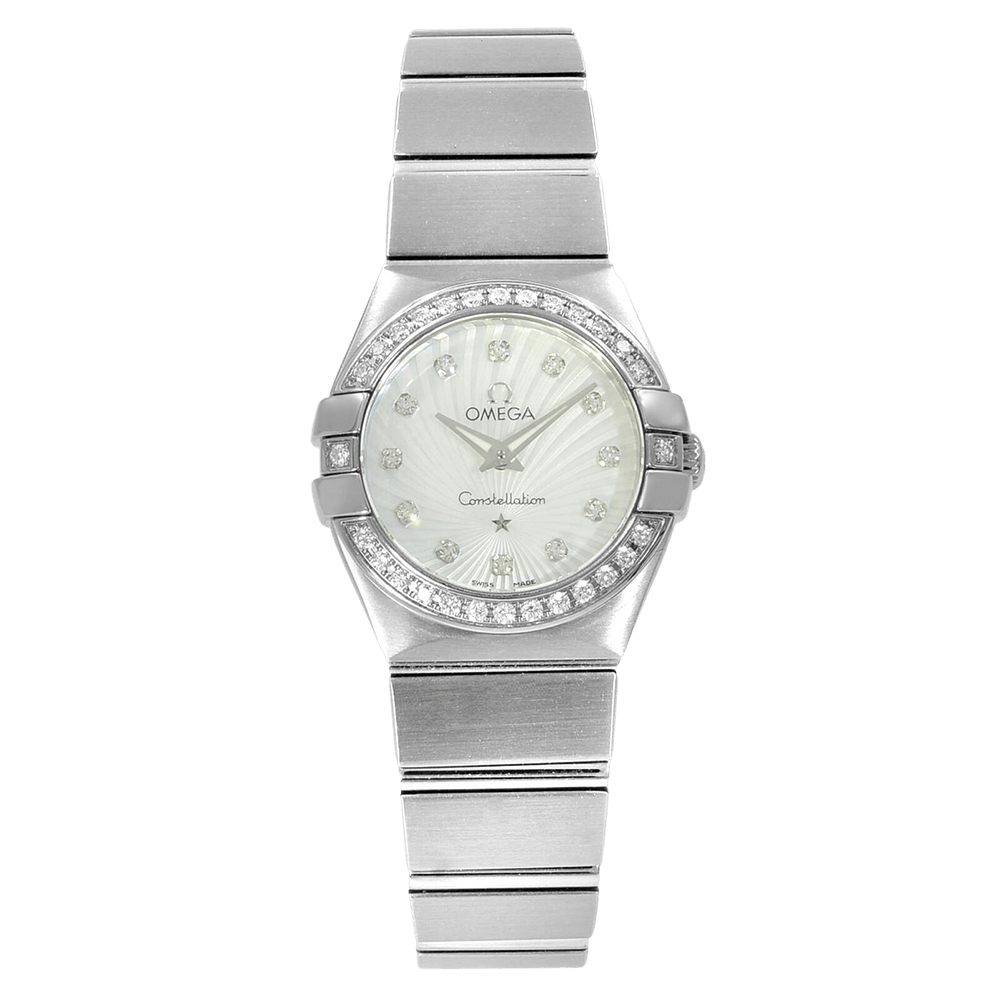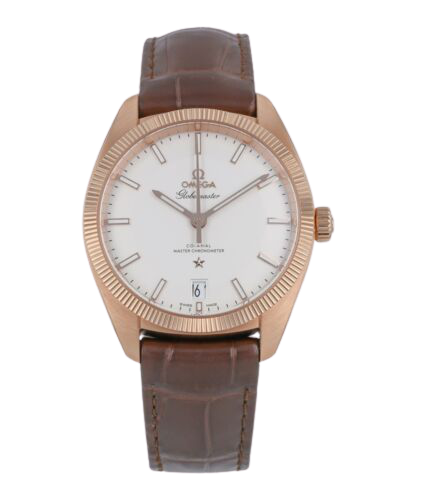Introduction to the Omega Constellation Collection
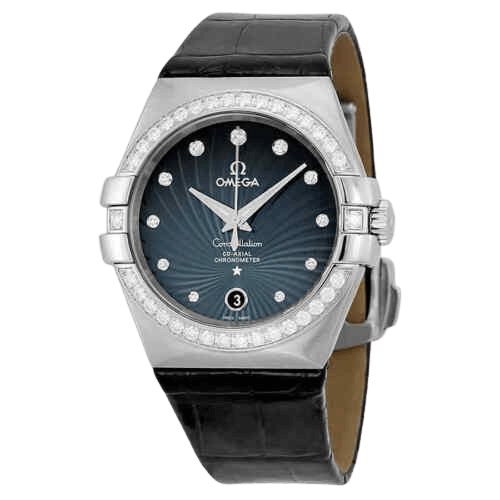
When the Omega Constellation was introduced in 1952, watch enthusiasts immediately embraced the elegant dress watch. The Constellation was Omega’s flagship line though the 1960s and is now the company’s second longest-running collection. While the style and design have evolved over its nearly 70-year history, the Constellation’s stellar engineering and elegant flair on the wrist remain unchanged.
Omega Constellation History and Background
Predating the constellation was the Omega Centenary (ref. 2499 and 2500), a limited-run automatic chronometer produced in 1948 to celebrate the company’s 100-year anniversary. The 6,000 Centenary watches produced sold out quickly. Omega responded by starting work on the Constellation. Despite the star that appears on its dial and the caseback engraving of the Geneva Observatory, the name “Constellation” was actually inspired by the Lockheed Constellation aircraft. Collectors and enthusiasts affectionately refer to these watches as “Connies.”
The early Constellations, beginning with ref. 2648, were richly appointed with a domed pie-pan dial, Dauphin hands and faceted diamond-shaped markers. Until 1956, Omega Constellations were powered by the calibre 354 bumper movement and produced in yellow or rose gold and steel. Constellations were available in three finish levels: Standard, Deluxe and Grand Luxe.
The Constellation was originally marketed in the United States as the Globemaster, but its branding was unified with the rest of the world in 1956. In 2015, Omega reintroduced the Globemaster as a sub-brand of the Constellation series, this time as a 39mm Co-Axial Master Chronometer (ref. O13053392102001) powered by the calibre 8900 with a pie-pan dial. The modern Globemaster was the first Master Chronometer in history.
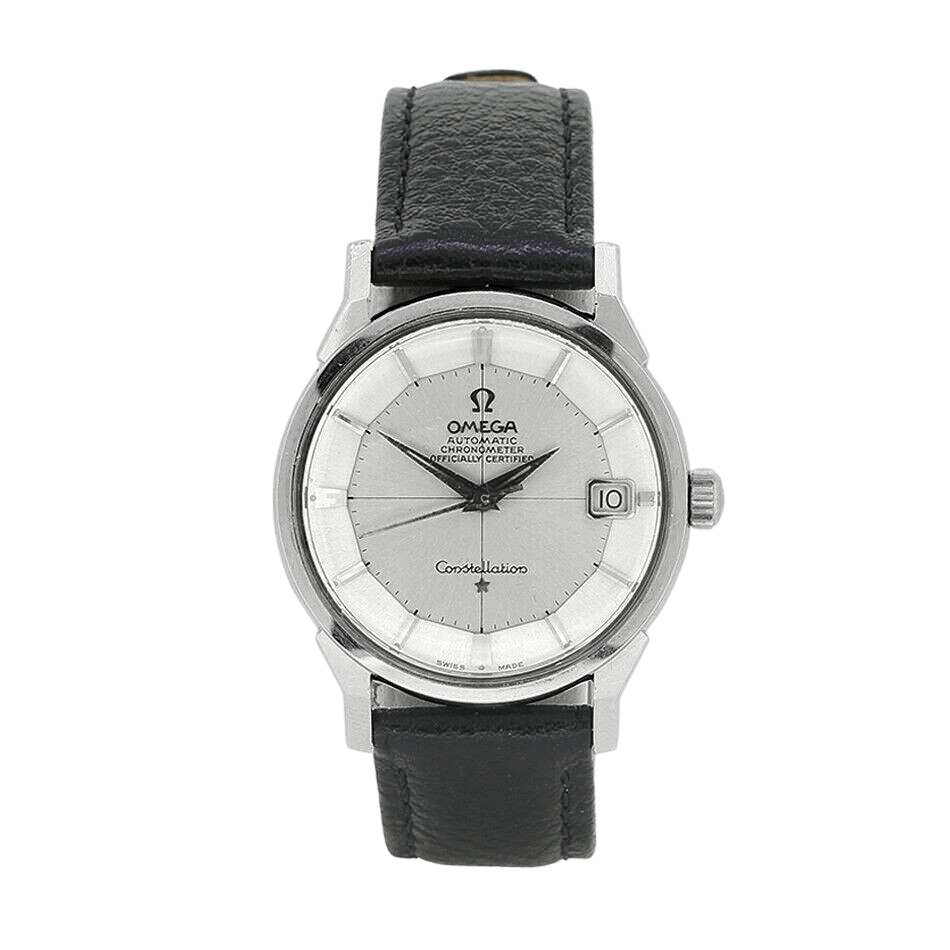
Throughout the 1960s, the Constellation series case was round, but Omega adorned it with a wide variety of markers, lugs and bracelets. Toward the end of the decade, the Integral (ref. 189.009), with its rectangular case and fully integrated bracelet, signaled a new direction for the collection. From 1970 until 1982, Omega embraced quartz movements and explored a wide variety of case shapes for both digital and analog models. Omega enthusiasts often lament this era as a period where the series lost its elegant aesthetic.
In 1982, Omega unveiled the Manhattan, widely heralded as a rebirth of the Constellation. The Manhattan remains a cornerstone of the modern Constellation Ladies collection and in the designs of the Gents collections for men, which carry forward the integrated bracelet, polished claws referred to as “Griffies” at 3 and 9 o’clock and intentional lack of sharp edges.
Since 1985, Cindy Crawford has served as brand ambassador for the Omega Constellation. She was recently joined by Nicole Kidman, Alessandra Ambrosio and Liu Shishi to represent the elegance and individuality of the collection.
Omega Constellation Key Dates
Constellation Features and Design
For nearly all of its existence, the Omega Constellation has been described as an elegant dress watch that is precision engineered for maximum accuracy. Important design elements and features of the collection include:
The pie-pan dial with its 12-sided design that resembles an upside-down pie pan

Integrated bracelets that are inherently part of the watch’s design
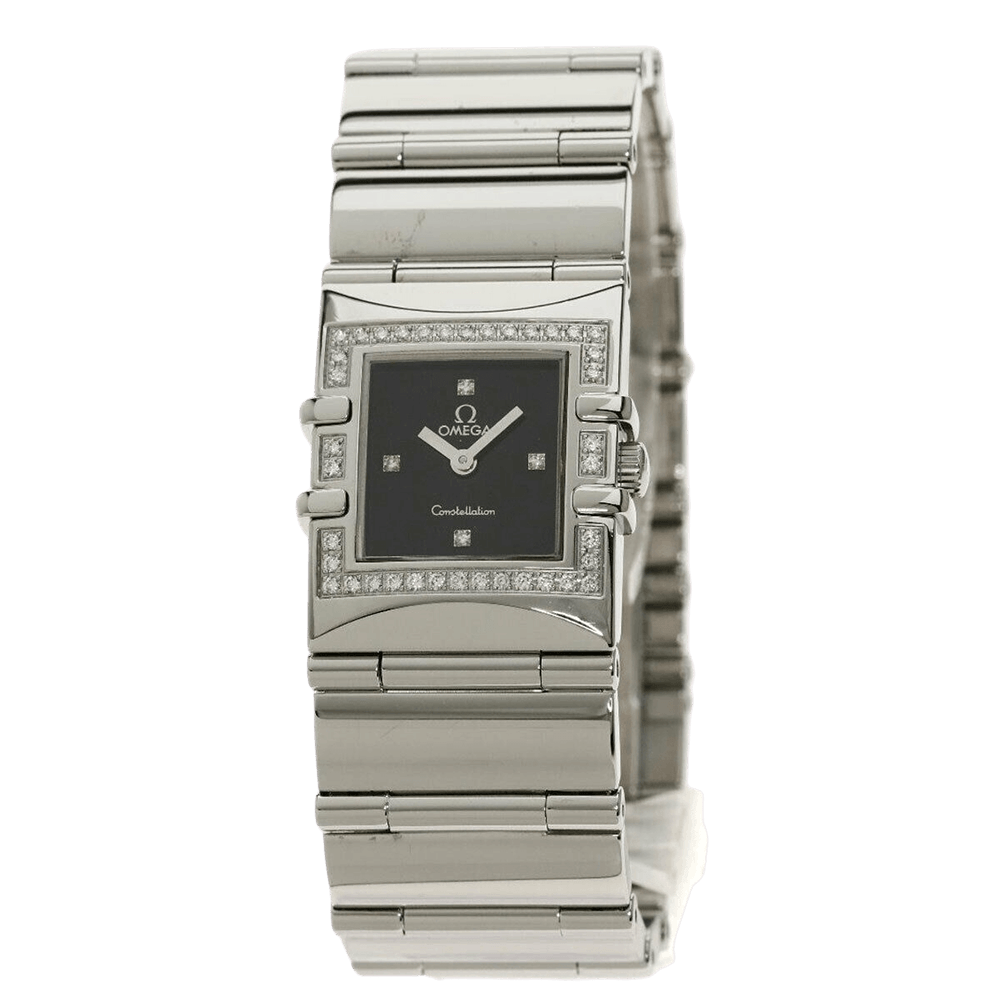
A focus on building beautiful, functional watches for women with highly decorated dials
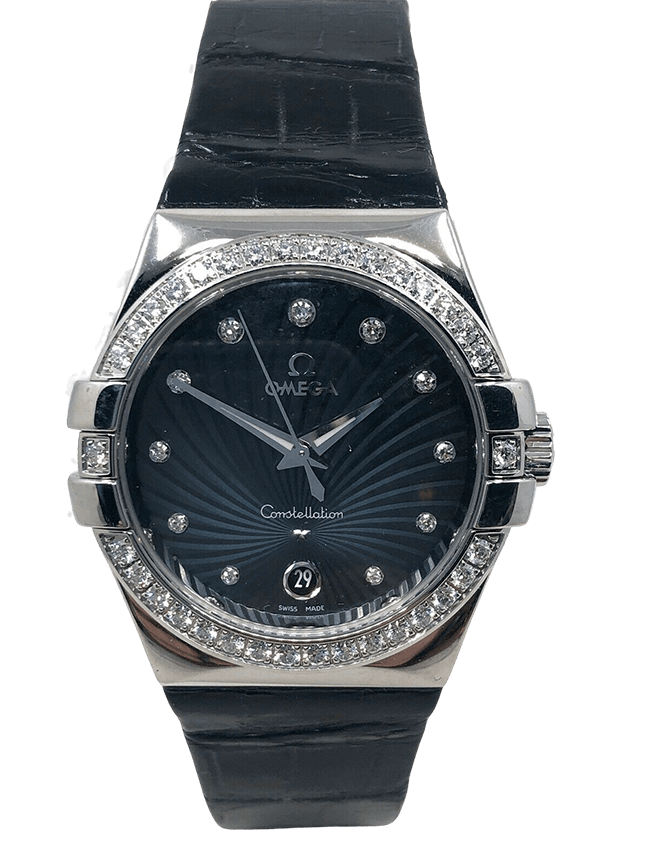
- 10-sided crowns on early models
- A caseback featuring an engraved image of the Observatory of Geneva
- A wide variety of movements, both mechanical and quartz, beginning with the 35X bumper movement and culminating with the Co-Axial Master Chronometer
- Case shapes including traditional round, rectangle and space-aged looking digital styles in a variety of sizes
Constellation Value and Collectability
Vintage Omega Constellation watches are sought after by collectors and enthusiasts for their style and value. Precious metal cases command higher prices, but owning a used Constellation from the golden era of production that ended in 1969 often requires less investment than many other vintage watches. Early models featuring the pie-pan dial are the most prized, especially all-original examples softened with a desirable patina. The finish designations – Standard, Deluxe and Grande Luxe – can create confusion over value since the designations were applied in a somewhat fluid manner.
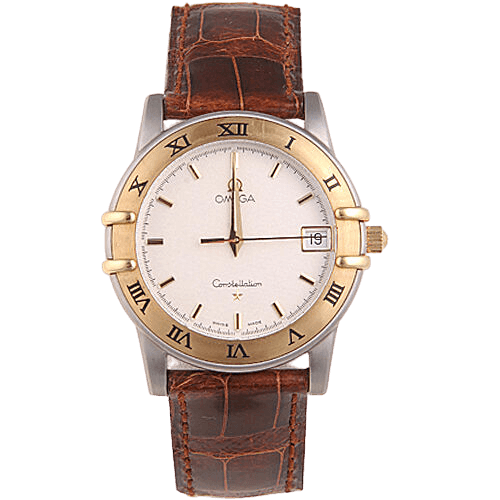
To confirm authenticity, look for the 10-sided crown, the unique serial number, a rectangular date window (if applicable), an original crystal etched with the Omega logo and the presence of a collection-appropriate movement. Used Omega Constellation watches with rectangular cases from the 1970s and pre-owned Manhattans, Gents Collection and Ladies Collection models from the 1980s forward remain highly desirable.
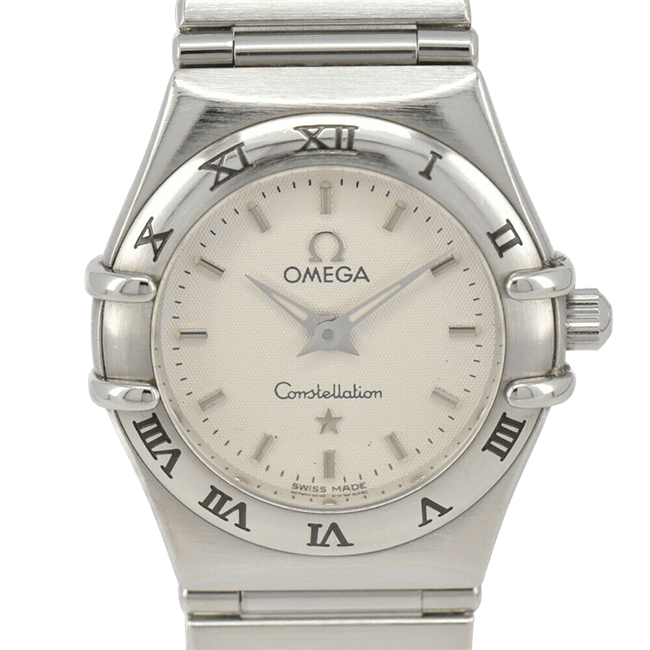
Watchmaker's Perspective
When the Omega Constellation was released in 1952, automatic watches were still relatively new. The first Constellation wristwatches included bumper automatic movements, which were still in style at the time. Bumper automatic movements differ from the common rotor automatic movements that we know so well today. The weighted rotors in bumper automatics swung back and forth, but not all the way around. Two small springs, 180 degrees opposite from each other, provided the restoring force to send the bumper swinging back in the other direction. The wearer could even feel the small thuds caused by the rotor being bumped back and forth.
The original bumper automatic movement for wristwatches was invented by British watchmaker, John Harwood. Harwood lived and worked on the Isle of Man, which is where two other very famous British watchmakers are from: George Daniels and Roger Smith. Eventually, watchmakers realized that having a rotor spin 360 degrees was a much more efficient arrangement. In addition, the bumper automatic movements had a tendency to wear quicker than their 360-degree cousins. Eventually, the Omega outfitted their Constellation movements with the newer style 360-degree automatic rotors, and the rest is history!
